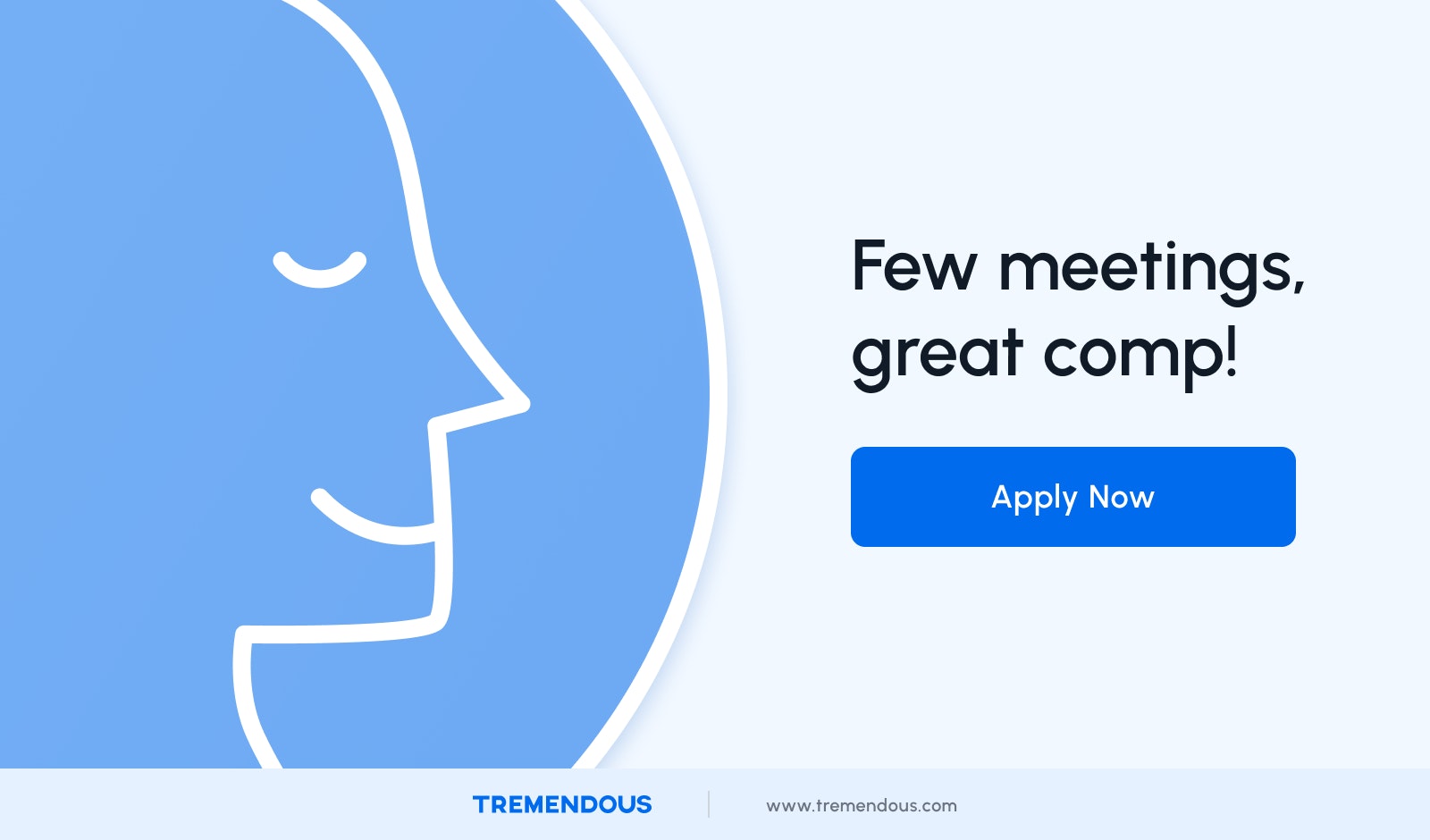Employee onboarding is often a letdown. We fixed it.
By Kate Monica●8 min. read●Oct 10, 2024
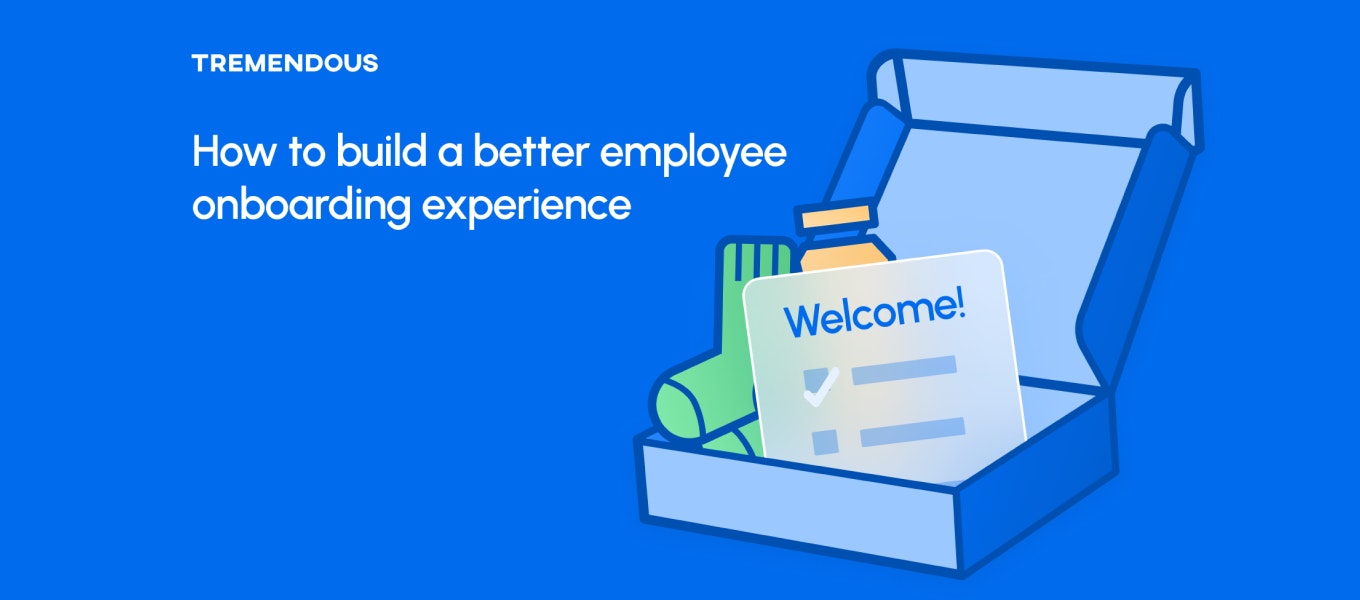
A subpar employee onboarding experience totally torpedoes the momentum of an excited hiring process.
I’ve joined companies full of fervor after a galvanizing interview process, only to experience an anticlimactic day-to-day reality.
But my experience at Tremendous was different. I built up the organization in my head, as always, prior to joining. This is likely a psychological inevitability.
The onboarding process, though, wasn’t a letdown. I quickly saw that the offer letter didn’t mark the end of the recruitment process. It marked the starting line of a hopefully gratifying career for the recent hire.
Granted, we’re small: we’re a team of about 60 right now. But the elements that make our onboarding process exciting can be replicated at any company of any size.
The employee you landed either took a leap of faith and left their previous gig for you, or they turned down other offers for your company, or they joined after a difficult period of unemployment and are anxious to get the ball rolling again.
No matter the circumstance, one thing is true: your new employee represents a rare and liminal resource. They’re brimming with enthusiasm about the company and the role.
Key points:
This is what makes for a great onboarding experience:
A personalized onboarding document
The trust and autonomy to start contributing to projects immediately after hire
A publicly-available video introduction
An asynchronous onboarding process
A short series of ask-me-anything (AMA) style Q&A’s with key stakeholders to support the asynchronous onboarding process
Here’s a couple things we do, but won’t cover, since they’re common practice:
We assign a directly responsible individual (DRI) to each new employee to serve as their mentor.
We send a welcome package of goodies, including a branded sweatshirt, socks, and other swag, as well as a company Macbook to each employee prior to start.
We allow new hires to join the company Slack and lurk for a week or so before their start date so they can get a sense for the vibe and the way we talk to each other.
Alright, let’s run through how, exactly, HR personnel and hiring managers can ensure new employees have the best onboarding experience possible.
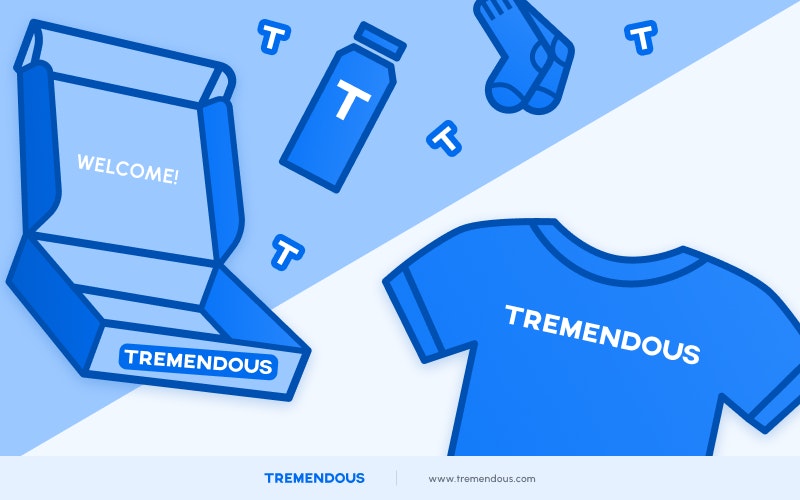
An onboarding doc as a piece of persuasive writing
I received this onboarding document in Notion one morning, a couple days before I started:
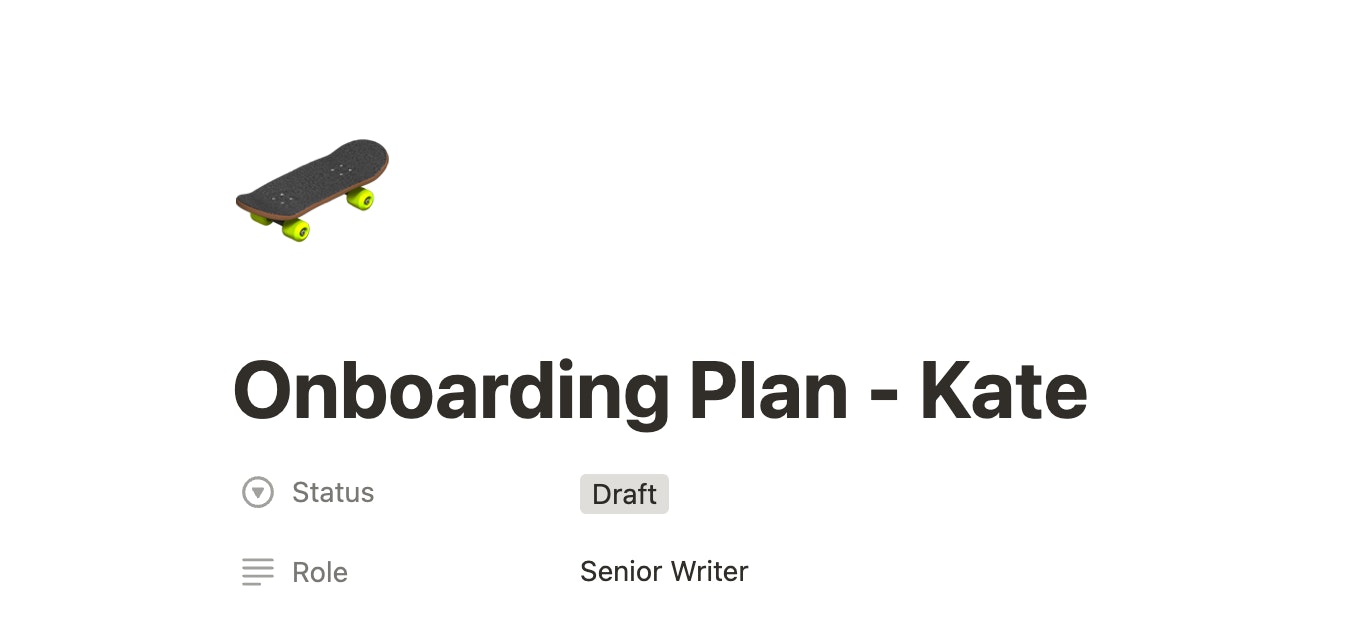
One quick call-out that I found endearing: the emoji that my boss (Director of Product Marketing Jesse Friedman) chose to use for my onboarding doc was an homage to something I’d mentioned in our interview process.
I love skateboarding and I skate every day. We talked about it a bit throughout hiring. He chose a skateboard emoji to decorate the top of the doc, and it warmed my heart a little.
I felt like he really listened. Just a small, personal touch that had an impact.
Anyway, this is how the doc opened:

What followed were a few handpicked quotes from the interview deliberations, which, of course, I was not privy to, that led to their decision to hire me. They were all very flattering, specific observations that made me feel special.
I won’t include them here because that feels massively gratuitous. But definitely consider including specific quotes in your onboarding doc for new employees.
It’ll make them feel valued right away. And employees who feel valued get more done and stick around longer.
Next was a description of my role:
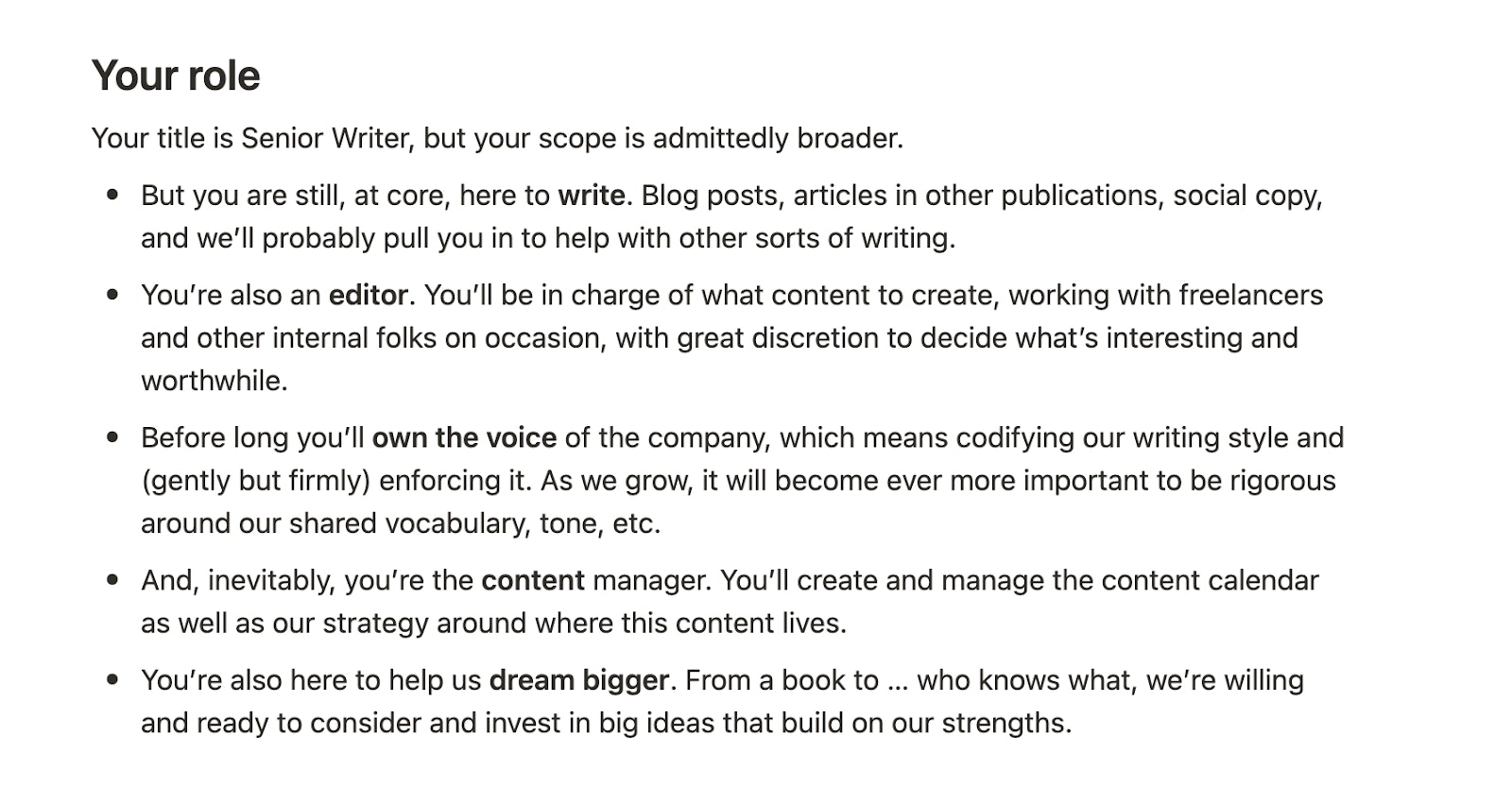
I do want to flag that last bullet point, as it has great rhetorical power: “You’re also here to help us dream bigger.”
When I read this, I really did start racking my brain for ways I could help the company widen its scope of what’s possible for a marketing team. It sounds silly, but it’s true.
Consider including an aspirational directive somewhere in the onboarding doc. Words matter. And they’re a valuable persuasive tool, especially at crucial junctures (like onboarding).
Getting started right away
Next, Jesse included a checklist of all the standard setup tasks I had to complete, which I checked off one-by-one and at my leisure. The asynchronous nature of this onboarding process made it a lot less intrusive and banal than experiences I’ve had in the past.
Then, there was a section on “people”. This was an exhaustive list of everyone I’d probably want to meet, as they’d have an impact on my day-to-day, or could otherwise offer some valuable insight as I ramped up.

Jesse also laid out all of the projects currently in progress, with links to existing documentation on Notion that described each project in detail.
Because we have a high-documentation work culture, all of these documents were publically available and easy to link to.
I was able to click into each of these docs and immediately get to work. My manager Jesse made it clear they trusted me to contribute right away, wherever I saw fit.
Autonomy is one of our core values. Here’s what our COO, Kapil Kale, says about autonomy in the employee handbook:
“People here are expected to drive their work forward, making decisions along the way and pulling in help as they need. Our management style is to provide context around problems and give individuals a ton of freedom in figuring out how best to solve them.”
My experience proves this to be true. And it started on day 1. I leveraged my own experience and judgment to make contributions where I saw opportunities.
As a result, I was able to write a white paper and three blog posts within my first few weeks of employment.
I wrote the white paper week one. This is more than I’ve ever accomplished in my first week with any previous employer. And getting things done immediately made me feel capable and hungry to do more.
The law of inertia applies both to the material world and, in many instances, to human behavior: objects in motion stay in motion — the more you do, the more you feel like you can do.
Finally, he gave me a rough timeline of what was expected of me in my first day, first week, and first month.
This gave me a kind of North Star. It shed some light on not only how I should be spending my time in these early days, but also gave me a benchmark for how much work any employee is expected to do on a daily and monthly basis.
This helped me gauge what I was in for so I could plan my time accordingly.
That way, I felt like I was performing either at or above expectations, and never felt that familiar, gnawing anxiety about whether I was ‘doing enough’.
Here’s a blank template for an onboarding document, if you want one.
Introductory video
Each employee is also asked to film a short video on Loom on their first day at Tremendous. Here’s mine:
As you can see, there aren’t stringent rules about format, content, or tone. It’s a brief, authentic window into who each employee is on a personal level.
It doesn’t take much time, but it does make an impression. And it doesn’t come with the pressure or doldrum of introducing yourself in a crowded all-hands meeting.
We post the video in our #announcements channel on Slack, where everyone is welcome to comment and react.
This makes it easy to ask new hires questions, welcome them to the team, and otherwise make them feel a sense of belonging at their new org.
Asynchronous onboarding
The onboarding process varies widely between organizations. Sometimes it’s a week of presentations; at other orgs, it’s a month of watching training videos, sitting in on calls, and shadowing managers.
Other orgs have no onboarding process to speak of – they just drop you into the pool and hope you swim.
At Tremendous, it’s three half-days of brief AMA’s.
The reason it’s so brief is because most of the heavy lifting is done on an asynchronous basis.
Rather than sitting through a ton of onboarding meetings and live training sessions, I was prompted to catch myself up on the documentation and existing knowledge on my own time through:
On-demand Gong recordings by the heads of each department. In these videos, department heads of Customer Success, Engineering, Marketing, Recruiting, etc. succinctly detailed how things worked on their team.
An extensive Notion library that included company plans and strategies, the employee handbook, materials about company culture, a product overview, and other resources.
These resources were linked in my onboarding doc. Two weeks after I joined, each department head held a 15-30 minute meeting fielding questions about the available materials from our group of new employees. So, an AMA.
If we didn’t have any questions, the meeting was either cut short, or the remaining time was used to shoot the breeze.
But no matter how the meeting was run, three things were true across each onboarding call: it was brief, it was targeted, and it was tailored to our specific questions.
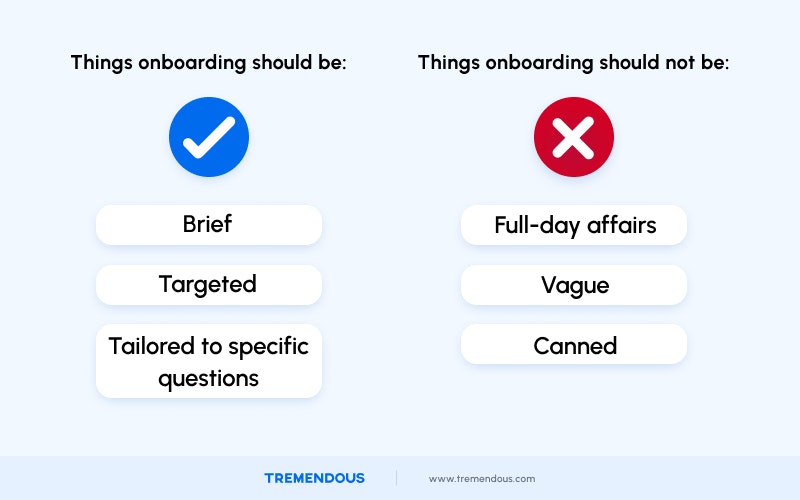
No sitting through generic slide deck presentations, no short quizzes at the end to see what we retained. Just a casual but pointed conversation with key stakeholders.
Conclusion
So, there you have it. Treating the onboarding process as the final step of recruitment rather than a victory lap can help your employees feel both valued and at home, right away.
And if you want to experience our onboarding process for yourself, apply to one of our open roles. We’re hiring.
